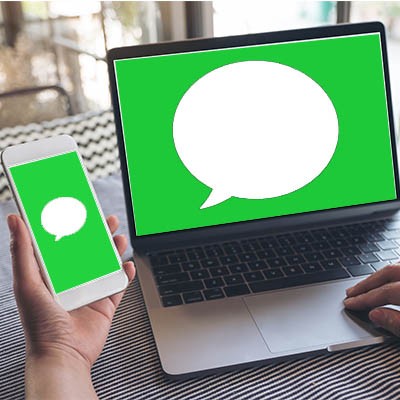Directive Blogs
The Security Risks of Using Workarounds to Get iMessage to Work on a PC
If you use an iPhone, iPad, or any other Apple device, you’ve probably used iMessage. iMessage is the popular built-in messaging app. It’s Apple’s version of the text message, but it’s packed with great features that iPhone users have grown very fond of. We looked around online for ways to access your iMessage in Windows, but only found workarounds that compromise your security.
We’re going to discuss these workarounds, but we highly recommend you do NOT attempt them. These are two of the most common procedures people have come up with to try to get iMessage to work on a Windows 10 PC, but both put you at a security risk.
Again, we strongly advise that you do NOT attempt these workarounds to get iMessage on your Windows PC.
iPadian - The Risky Third-Party App
The first method we found online is an application called iPadian. The software is available through the app store. It works by emulating an iPad’s iOS environment. Directive does not recommend going out and installing iPadian. The app often gets flagged as malware, and it is not supported by Apple or Microsoft.
One seemingly small download is an open door for a cybercriminal to infect your device and steal your data.
Jailbreaking your iPhone Voids Your Warranty and Puts You at Risk
This workaround is talked about a lot online, and not just for accessing iMessage in Windows.
Jailbreaking a device lets you do things that otherwise are restricted from the manufacturer. The practice immediately voids your warranty on your iPhone. Another drawback is the effect this could have on your device’s ability to stay secure. You’ll find a lot of online hobbyists and power-users talking about jailbreaking or “rooting” their phones and other devices in order to bypass some type of restriction, but if you don’t know what you are doing, you can put yourself at risk.
At best, you’ll break your device and have to buy a new one, and at worst, you’ll provide an attack vector for cybercriminals.
Unfortunately, as of right now, there is no supported way to access your iMessages from a Windows device. The risks strongly outweigh the convenience of being able to respond to your text messages from your laptop or desktop. The lesson to take away from this is to be wary of online tutorials and workarounds - they might work, but they also put your personal identity, your data, and your business at risk.
Before you attempt a potentially insecure workaround, give the IT experts at Directive a call at 607.433.2200. It’s much better to check for risk-factors ahead of time.


